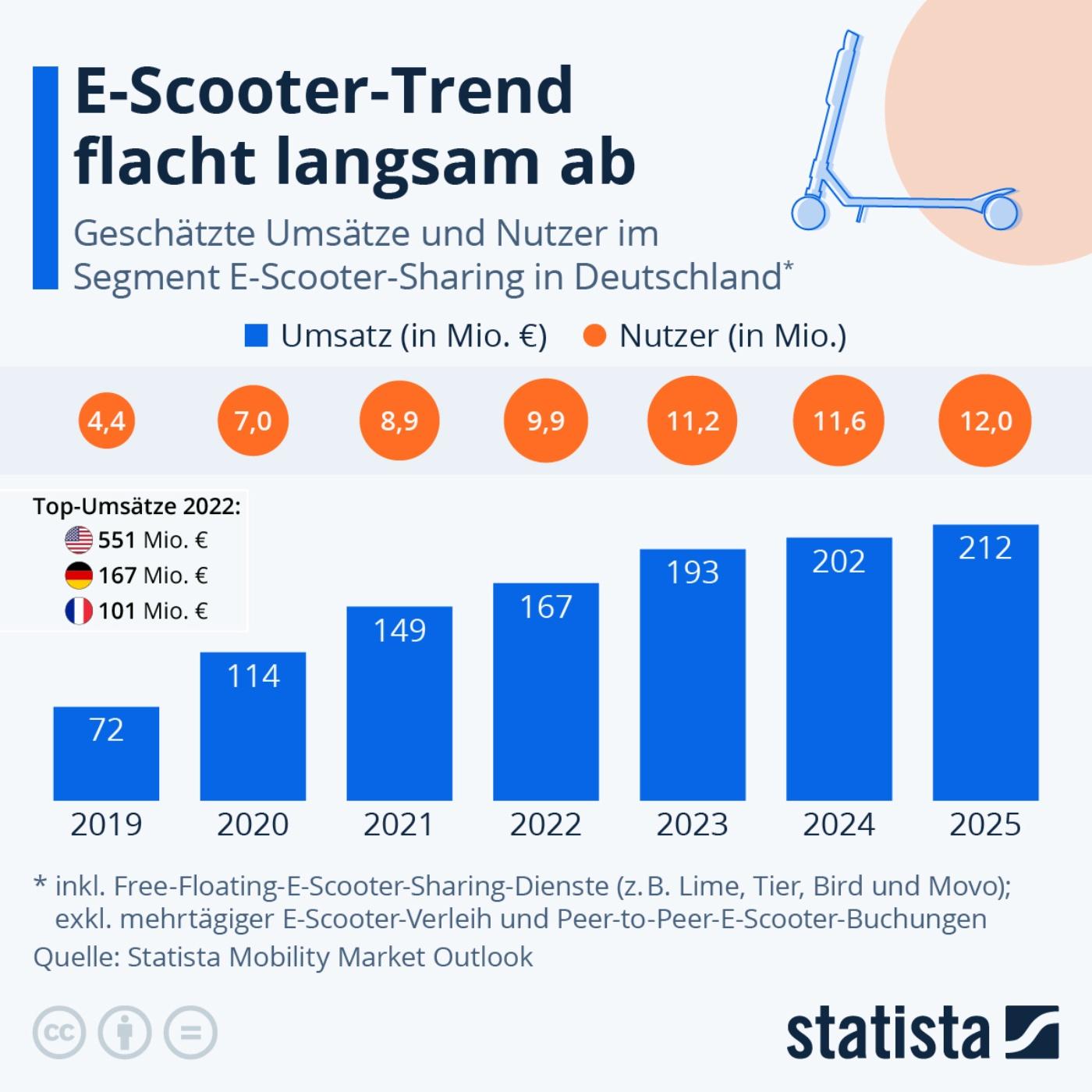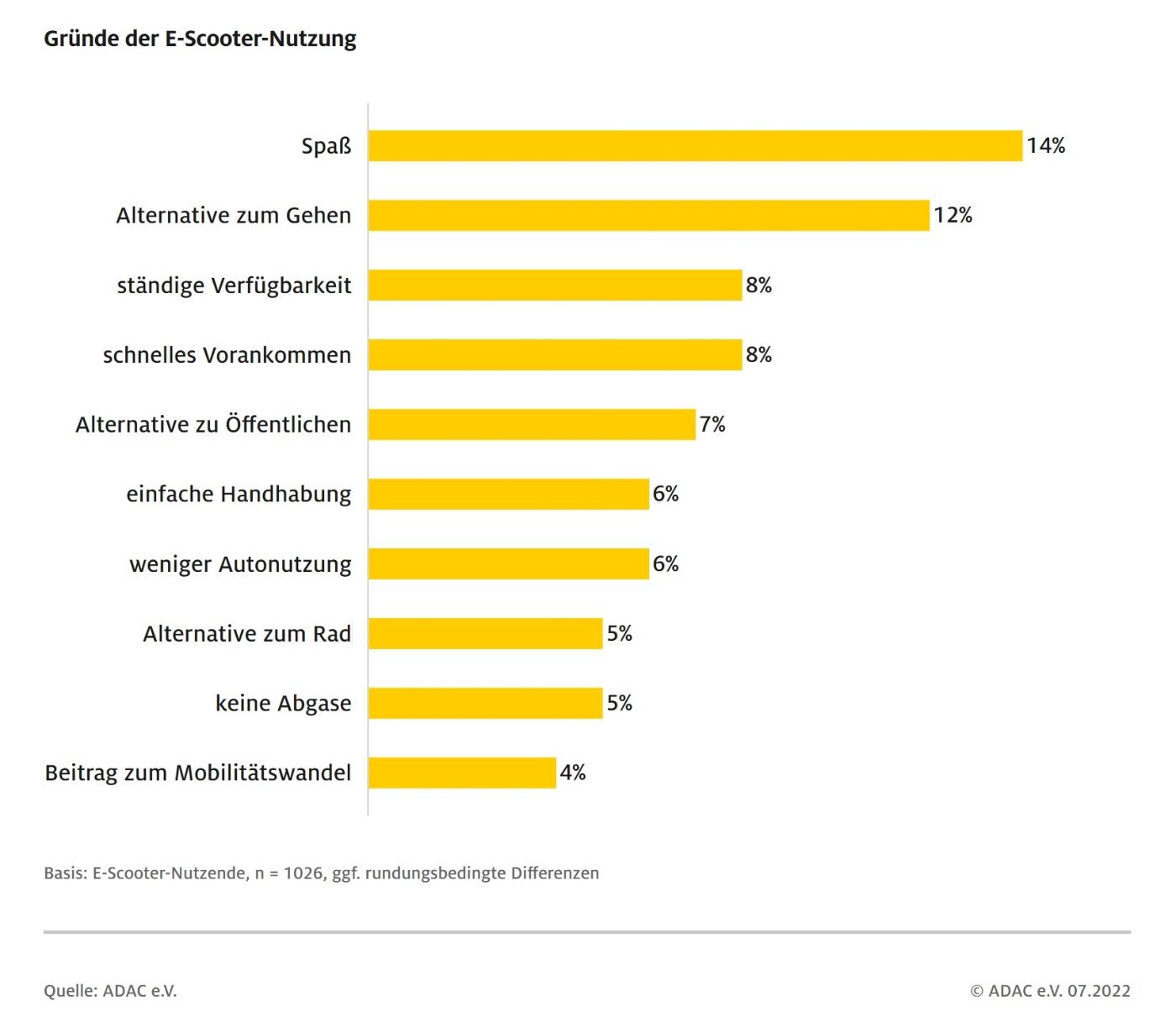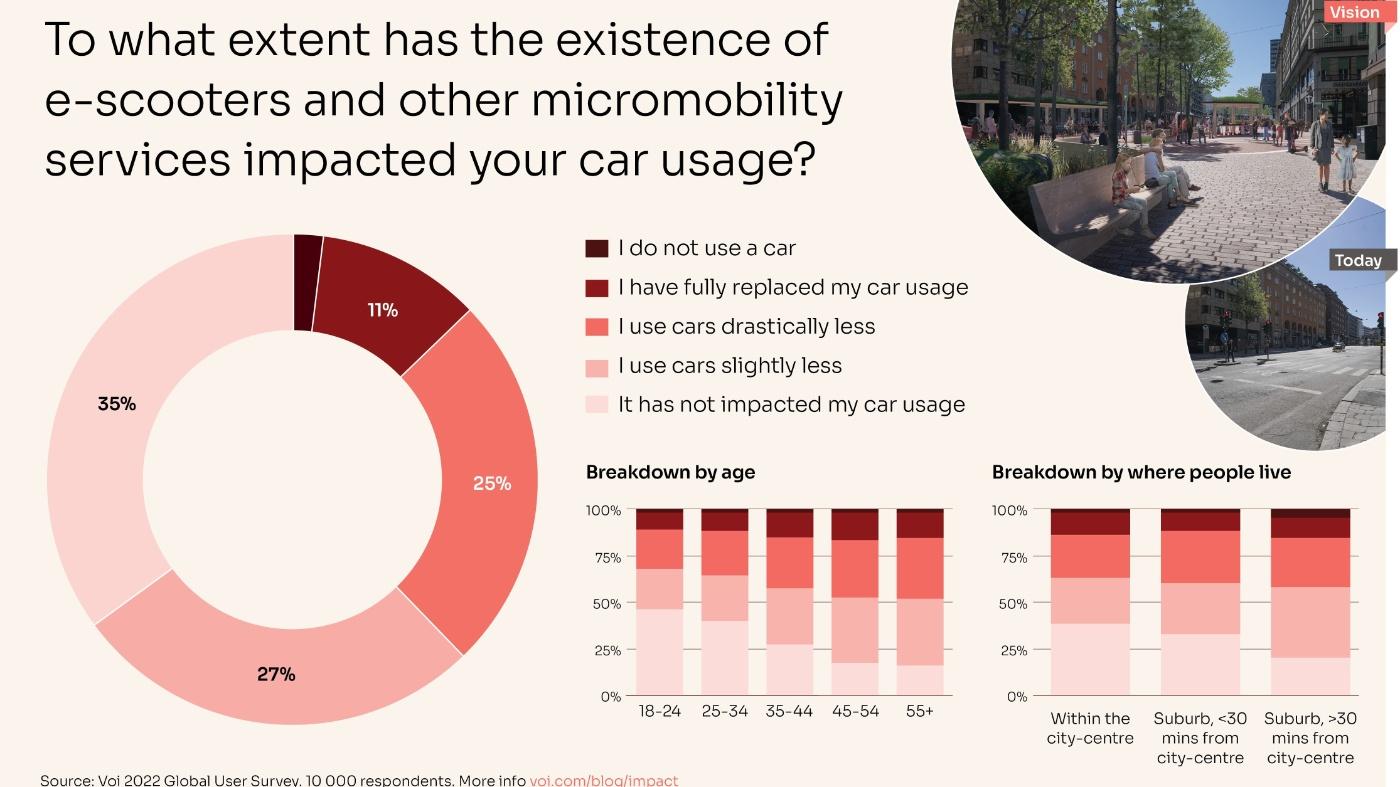Urban Mobility
The E-scooter trend - A popular mobility alternative
E-scooters continue to divide society. Studies show, however, that the popularity of electric scooters is growing. In big cities, they are even well on their way to becoming firmly established in the urban mobility mix.
E-scooters continue to divide society. Studies show, however, that the popularity of electric scooters is growing. In big cities, they are even well on their way to becoming firmly established in the urban mobility mix.
Speeding scooters with a bad reputation - this was the title of an article published by the Frankfurter Allgemeine Zeitung newspaper in October 2022, in which the rise of e-scooters was highlighted. The gist: Electric scooters still enjoy a bad reputation, especially among pedestrians, yet they are becoming increasingly accepted by the general public. It is a trend that can be seen in most major cities where e-scooters are available to rent, and which has now even led to e-scooters gaining a permanent place in the urban mobility mix in some metropolises.
A look at cities in Germany already shows how strong this development is: according to the current edition of the Statista Mobility Market Outlook (a market report on the topic of motor vehicles and mobility services worldwide), the number of users of e-scooter services in the Federal Republic has risen from 4.4 million in 2019 to 9.9 million in 2022. Although the market researchers assume that the curve, which has been rising steeply in recent years, will flatten out slightly in Germany in the future, they nevertheless forecast a figure of around twelve million scooter riders in Germany by 2025.

How e-scooters are changing our mobility
The acceptance of e-scooters is therefore increasing. The reasons for using electric scooters are numerous. In order to identify these, the ADAC [German automobile association] has now also looked into the topic extensively. In July 2022, they published a study in which they asked a total of 6,800 people in Germany whether, how and why they ride electric scooters. The result: 15 percent of the population aged 16 and over currently use e-scooters. Of these, 45 percent own their own, while 55 percent rent electric micro vehicles from sharing services such as Lime, Tier, Voi and co.
The reasons for using e-scooters are multifaceted: according to the ADAC analysis, it is mainly the fun of driving (14 percent of those surveyed), the alternative means of transport to walking (twelve percent) and the faster progress (eight percent) that motivate people to get on the electrically powered scooters. The latter two points already indicate that e-scooters are an attractive option for many users looking to optimize their mobility mix. This is also shown by the other motives for use, which include being an alternative to public transport (seven percent), an alternative to the car (six percent), an alternative to the bicycle (five percent) and a contribution to mobility change (four percent).

What role do scooters play in urban mobility?
In order to analyze the mobility behavior of e-scooters in more detail, the scooter provider Tier recently conducted a corresponding study. In collaboration with the market research company Ipsos, they examined the general mobility behavior in cities and the potential in the area of shared mobility. To accomplish this, researchers surveyed a total of 7,815 people in Germany, France and Norway. The result: cars (36 percent) and public transport (34 percent) are the most used transport options in cities. They each account for more than a third of the mobility mix. Shared mobility, which also includes e-scooters and rental bicycles, currently accounts for seven percent.
This number may seem small at first glance, yet the study also concludes that the potential is huge: more than half of the people surveyed already use corresponding services from time to time - or can imagine doing so in the future. This applies to e-scooters (28 percent) as well as e-mopeds (35 percent) and e-bikes (40 percent). In this context, it is exciting that the group of those interested in the topic is very balanced, too - both in terms of gender (48 percent of women and 52 percent of men) and in terms of the age groups up to 64 years. The main reasons for a reluctance to try out e-scooters and the like, or to use them more, are the lack of necessity, the costs, the availability and safety concerns.
Micromobility and e-scooters on the rise
The sharing scooter provider Voi also recently analyzed the usage motives of its users in an annual survey. A total of 9,898 people from eleven countries took part. One of the conclusions: Slightly more than a third (36 per cent) of users said they had drastically or completely replaced their car use due to shared mobility services. Another 27 percent of users said that they use the car somewhat less than before. And another exciting result: more than 55 percent of Voi riders worldwide said they combine e-scooter use with public transport use - a finding that suggests shared micromobility complements, rather than competes, with public transport.
With usage figures and data supporting the use of e-scooters as a mobility alternative generally rising, the recently published studies clearly show that e-scooters are well on their way to becoming firmly established in the urban mobility mix in major cities. It is a development that is likely to continue in the coming years, because market researchers expect further growth for the e-scooter segment in the future. According to the Statista Mobility Market Outlook, there were just ten million users worldwide in 2018, while by 2022 there were already 77 million. For 2025, the analysts even expect more than 110 million e-scooter fans worldwide.
